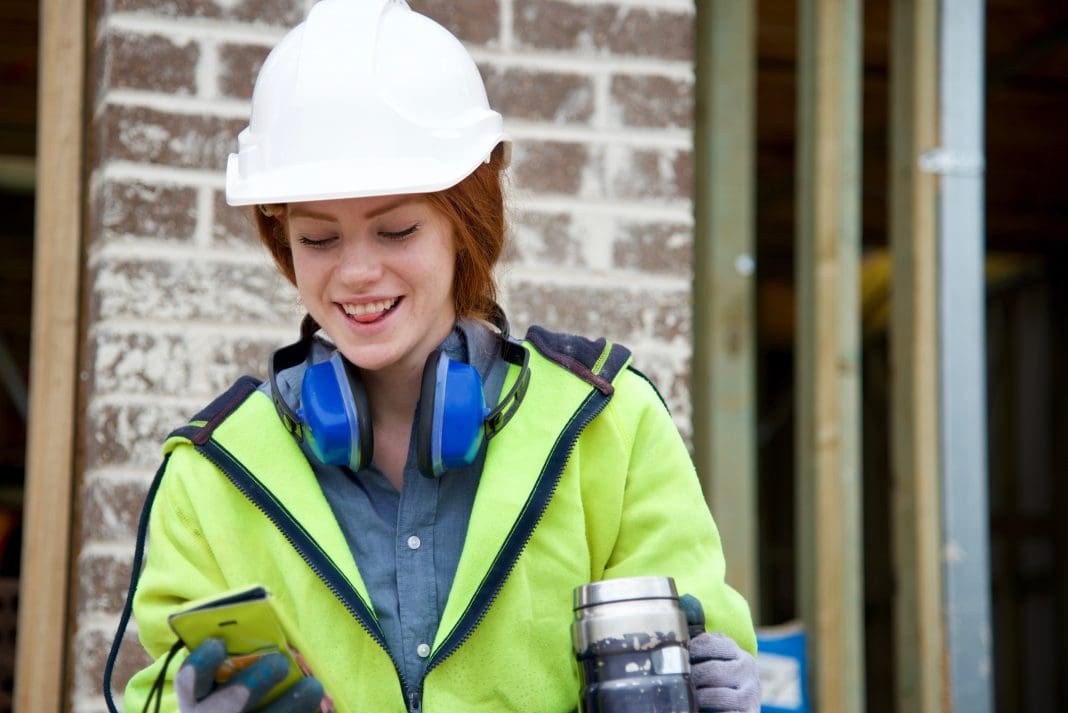PBC Today sat down with the CITB’s Deborah Madden to discuss why young people – and especially women – should consider a career in construction
Deborah Madden is passionate about bringing people from all sorts of diverse backgrounds into the construction industry – especially younger people and women. In her role as executive director at CITB, she oversees Employer Engagement, Marketing and Customer Experience.
What initially attracted you to the construction industry and making it your career?
My career with CITB started 27 years ago, and I came here initially because I had a training background. I’ve been a tutor, an assessor, a verifier and a training centre manager, so I had developed a real interest in training and skills and a real sense of how it can effect change. Working here, I very quickly developed a passion for the construction sector and the people in it.
Construction influences the entire environment around us. And I quickly learned that the majority of myths around the sector were just that. We’ve spent a long time trying to dispel those myths, and some of them are still out there. I spent my early career here working with young people, either as apprentices or as potential applicants, so I’ve spent loads of time on site doing the whole careers pitch with young people and their influencers.
On site, that’s where you really see the breadth of careers available and the myriad of people and personalities who work in this sector. I can’t imagine not working alongside the industry now; there’s this sense of constant change and challenge and people stepping up to deliver.
I genuinely enjoy being a part of that. I think – and hope – that the next few years will bring more change as we embrace more digital and modern methods of construction.
In the past year, the number of women working in construction has decreased by nearly 18%. What do you think the main reasons are behind this? And what role can organisations play in resolving them?
It’s an interesting one. We know that the number of women in construction remains relatively small, and we’ve still got numerous challenges, like many industries have, in attracting a diverse workforce. The industry, regardless of what the numbers tell us, is committed to facilitating and supporting a diverse workforce. CITB work with the Supply Chain Sustainability School to provide free-to-access training guidance, and support on diversity across the entire sector and that programme has a great take up with all sizes of companies accessing that support, from micro companies up to Tier 1s.
We also supported the development of the ‘10 Steps to Flexible Working’ plan with our partners Build UK and Timewise, and we’re working with the Lighthouse Club on a range of mental health support, including menopause support through the mental health wellbeing hub.
We have also worked with our on-site hubs on the removal of minimum contracted hours, because that’s a huge barrier for women in the industry, particularly for those with caring responsibilities.
“Our hubs also actively target an increase in diverse individuals.”
Over 50% of our STEM ambassador network is made up of women. We encourage those women to engage with schools and colleges, presenting themselves as relatable role models for the people that they’re talking to promoting the sector.
Of course, we have the Top 100 Women programme, which is not just awards, although the awards are a big part of it.
The National Federation of Builders developed and implemented this concept three years ago, and CITB have just taken it on this year. We’re still working with NFB but it isn’t just awards; it’s about a whole programme of events to empower women. It aims to help women to own their success, develop their leadership and it also recognises allies who offer advocacy, support, and solidarity to women in our industry.
The shortlist for the Top 100 Women in Construction has been recently announced, recognising some of the most influential women in construction. Which positive trends have you observed with this year’s candidates?
We can’t single people out whilst the judging is still happening, but it’s fair to say that there are lots of inspirational stories highlighting the overcoming of personal adversity and the challenges that women have had in the sector.
I was a judge for the nominations last year and I was touched and inspired by some of the things the nominees had managed to get through. Some women have had some real challenges on site, and not always from men either, which is interesting.
We’ve seen a really positive set of nominations this year, and there’s an underlying sense that things feel better for women. The industry feels more of a safe space to work, and women feel more able to challenge when something doesn’t feel quite right. Since last year, I’ve seen a real positive difference in that regard, in this year’s nominations.
But we shouldn’t take that as a signal that there are no issues with diversity in our sector. What the nominations tell us is that we need to fortify our networks for women, continue to promote and highlight successful women in our sector and continue to encourage and support the industry to address harassment and bias to create a more inclusive workforce.
The new government has made clear its intentions to build economic growth and specifically boost activity in the planning and housebuilding sectors. Is this an opportunity to bring more women, especially young women and students into the sector?
Absolutely. There are far more jobs than there are people to fill those jobs at the moment. It’s well documented that we need over 250,000 additional people over the next five years. Potentially more, with Labour’s plans for boosted homebuilding.
CITB itself will invest over a £1bn over the course of the next parliament, working with industry, with training providers, and with the government to address the skills and workforce gaps. We won’t fill those gaps with what has been considered our traditional recruitment base, although I’m at pains to point out that our traditional recruitment base is vitally important to us.
We and the industry need to actively promote to as diverse a range of applicants as possible and make sure we get the conditions for working in the industry right for as many different people as possible.
It should be easy to get into this sector, given the number of roles and vacancies. The entry route is the same for everyone, and there are lots of avenues of support for people from diverse backgrounds, either through CITB or independent of CITB.
The problem, though, is the current skills system, and I include apprenticeships in that. It’s really difficult to navigate – especially for micro employers, but for all employers. We offer a comprehensive service to support small employers to get the right training for the business. But if that skills and training system was easier to use, many more employers will be inclined to get involved without that support, thereby making those vacancies more apparent and available.
This is a sector that wants to work together and with the government to get those entry routes right and fit for purpose, and to fill the gaps with whoever is committed to filling them.
There is always room for improvement. Over the last two years, CITB has seen a 30% increase in apprenticeship starts in construction. We invested £70m in achieving that 30% increase, an increase that bucks the trend of apprenticeships recruitment nationally across all sectors. I’d love to say it’s all about CITB and our New Entrance Support Team (NEST) and our expanding National Construction College provision, but it’s also about the industry stepping up to the challenge and working with us on bringing new entrants in.
There is also an issue with training availability. The current skills system does not lend itself to serving the construction sector in the way we need it to. And that impacts everyone, from the people who are trying to change career to employers. We really welcome the proposed government review of skills and curriculum. We need fit-for-purpose training solutions that are flexible enough to accommodate the competence needs of the entire sector, from Tier 1 contractors to the proliferation of medium, small and micro companies that make up our industry.
What we want to see is true vocational training programmes with enough emphasis on the job elements of skills training. Apprenticeships are great and we intend to keep supporting the sector to grow there, but they are not the right route for every individual, and we want to see alternative routes considered to enable access to a wider pool of people more generally.
What would you say to young women considering a career in construction?
Go for it. Take the opportunity to find out what roles are available. You can use Go Construct to do that online, very easily. There are career finder quizzes on there to help you decide what roles in the industry might be for you and lots of information to point you in the right direction to get a deeper understanding of the industry
Talk to people, women and men, who work in the industry. Embrace things like Open Doors – an annual event organised by Build UK and supported by CITB and much of the sector. At these events the industry literally opens its doors to schools, colleges and the public and you can find out what it really feels like on site. Talk to the people on the sites, maybe undertake some work experience to get a real feel for it.
I’m not exaggerating when I say the opportunities in this sector are endless. This is an industry that is truly unique in the way it supports and promotes the people within it. There are so many people who I met as apprentices many years ago that now lead their own growing companies and have taken on apprentices of their own. There are more examples of people who’ve entered the sector as tradespeople, who now hold very senior positions.
It’s a technical and practical industry with so much talent in it, and the sector really uses that talent well, in my opinion. So go for it!




![[VIDEO] Local planning inspector recruitment to begin in earnest in new year A drive to recruit local planning inspectors will begin in the new year](https://www.pbctoday.co.uk/news/wp-content/uploads/2025/12/iStock-2159482095-2-218x150.jpg)









